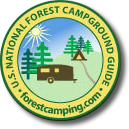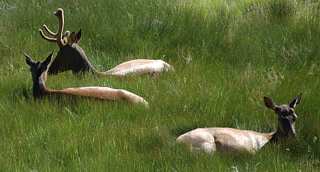Safe Wildlife Viewing Tips
Watching elk bed down for the night in an open field, a deer leaping gracefully over a downed tree or bears next to the road munching dandelions. These are some of the memorable wildlife encounters found in a national forest. Little wonder wildlife viewing is one of the top reason folks visit national forests and grasslands every year.
Being able to observe wildlife in nature is thrilling but the native residents of a forest or grassland are, by definition, wild and can be dangerous. Remember:
– Regardless of size, Never approach, feed, or entice wildlife of any kind to you. Each year, more people are injured by “cute” critters than of the “dangerous” one.
– Always have a wildlife free or “Bare” campsite. That means anything that has potential of attracting wildlife for any reason should be stored in a hard-sided vehicle/trailer/motor home or in the campground’s food storage lockers.
– Never store yummy smelling stuff, like ripe cantaloupe, cooked bacon, and sweet-smelling deodorant soap, in your tent or in an ice chest that isn’t stowed in a closed hard-side vehicle.
Some other tips:
– Keep a safe viewing distance at all times (a “safe” distance is 100 to 300 feet).
– Carry Bear Spray in an area with even a remote chance of a bear encounter. It is always better safe than sorry.
– Avoid a close encounter with wildlife by making noise – Lots of noise!
– Travel in groups and NEVER lose sight of one another, no matter their age.
– Keep your dog on a leash at all times – this is more for the dog’s safety, not the resident critters.
Observing these tips will help to keep both campers and wildlife happy, healthy, and co-habituating peacefully.



